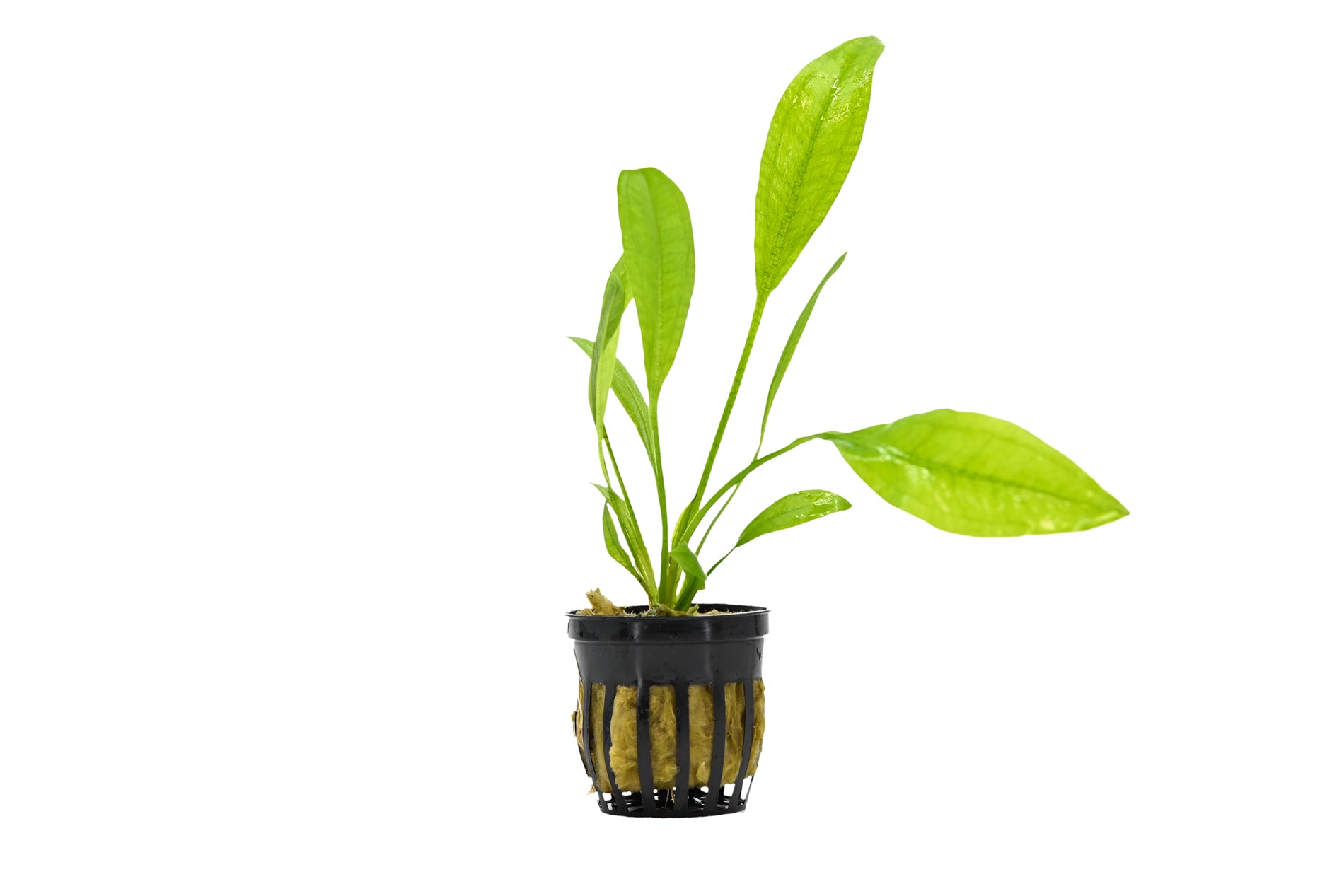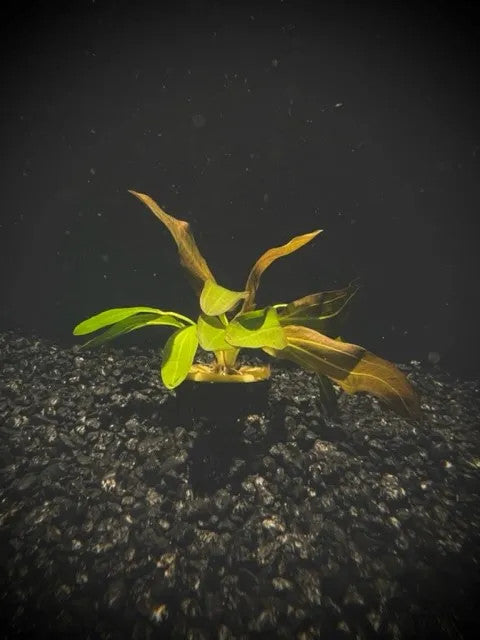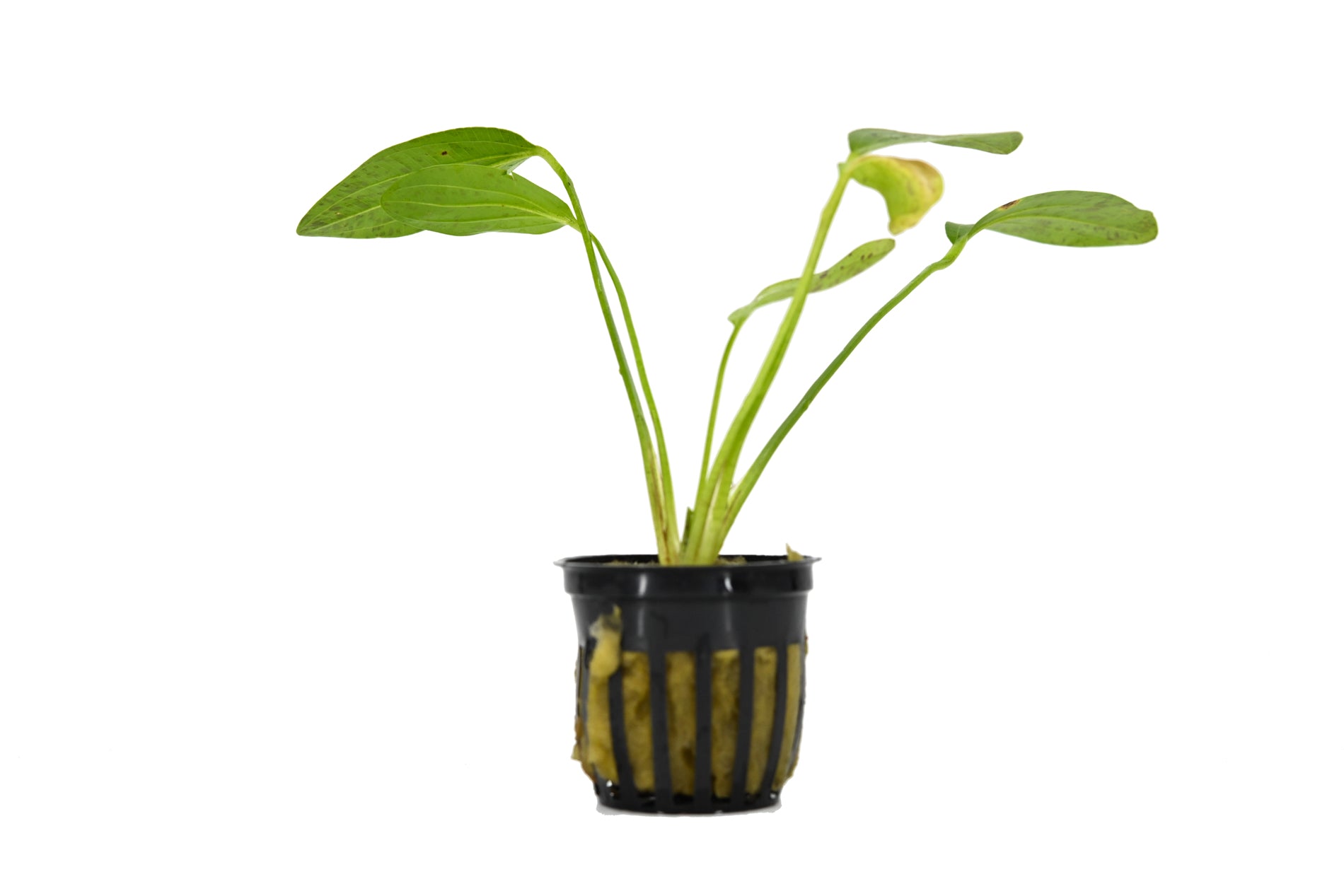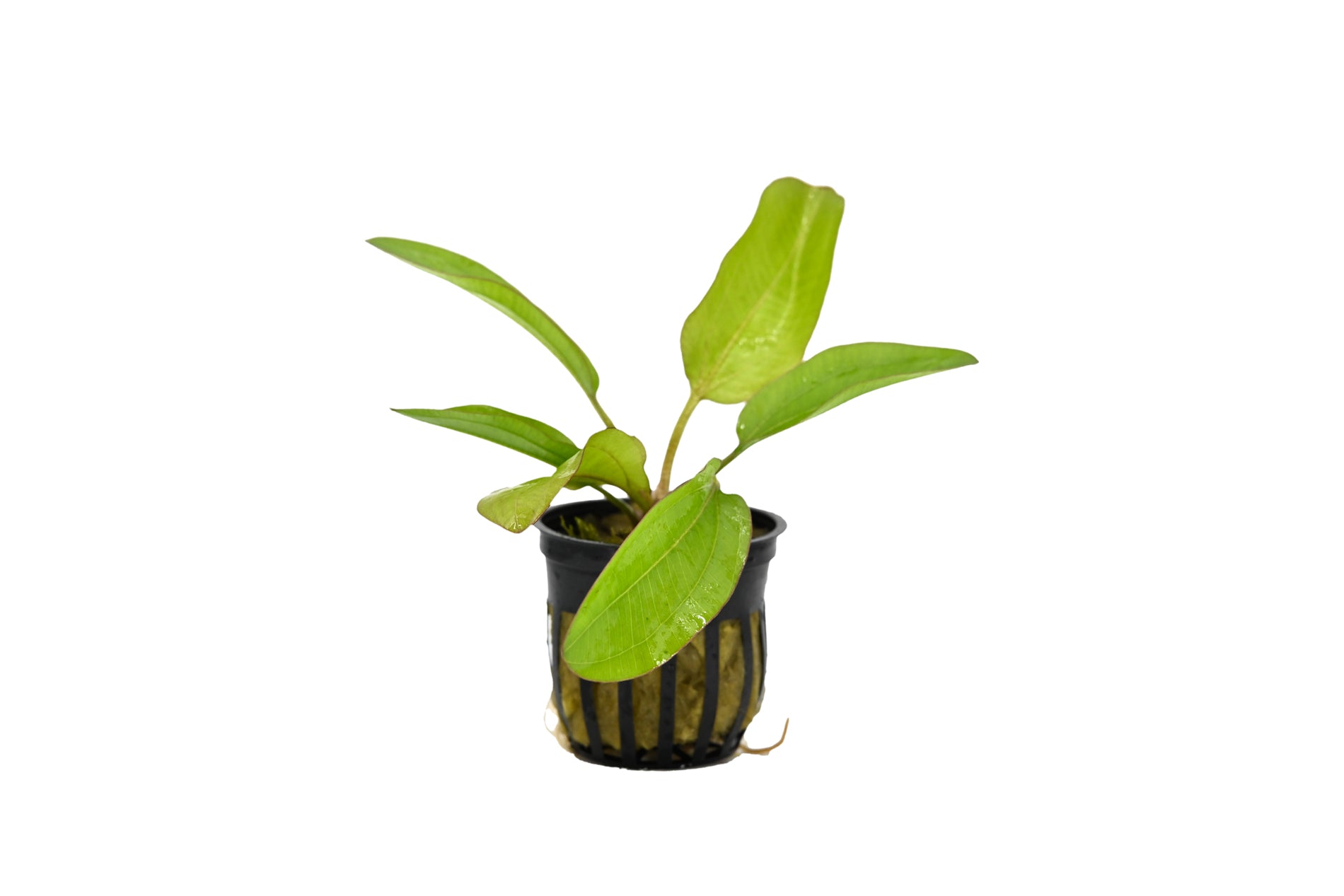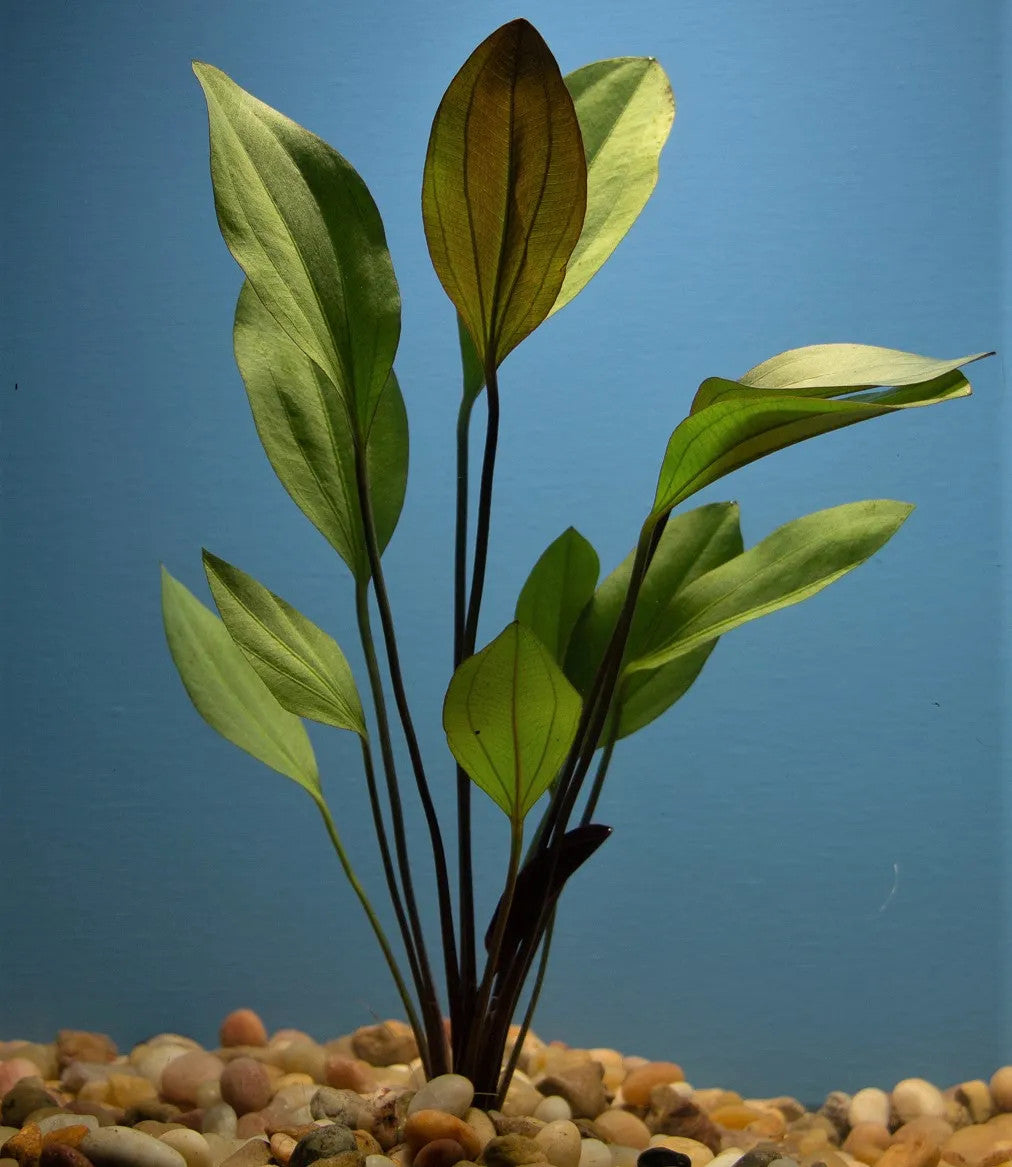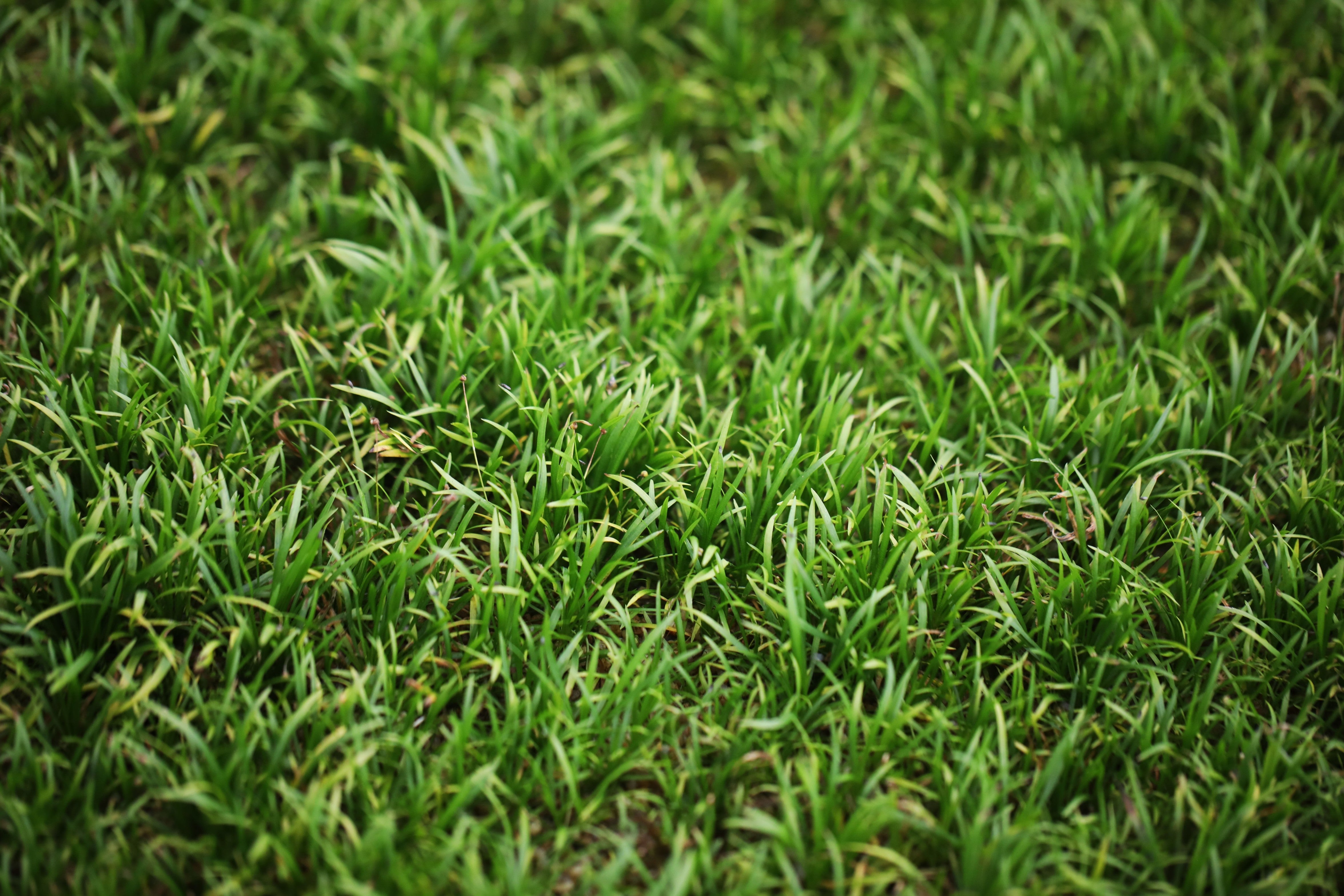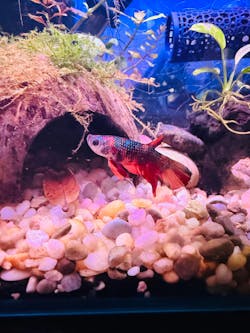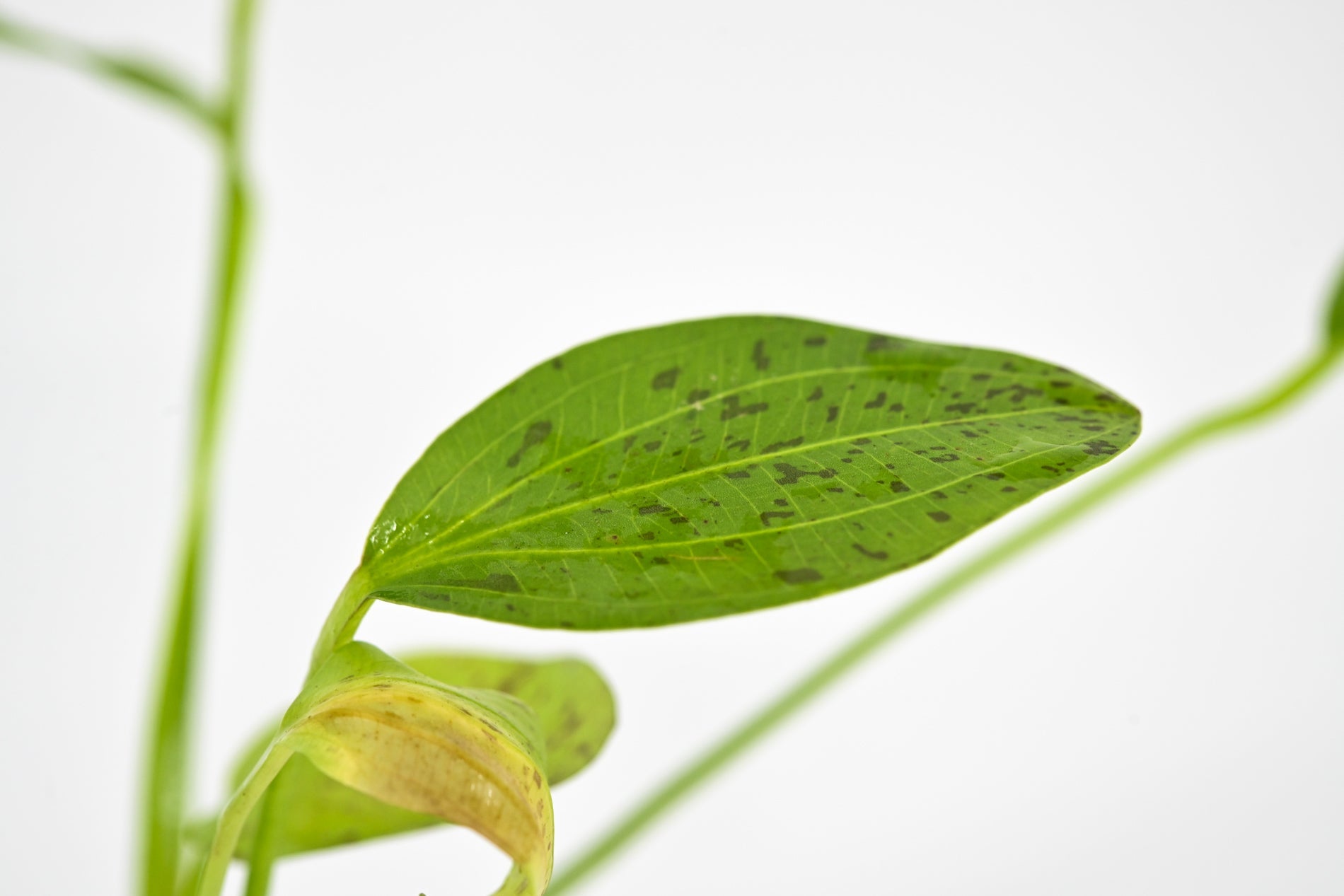
Sword Plants
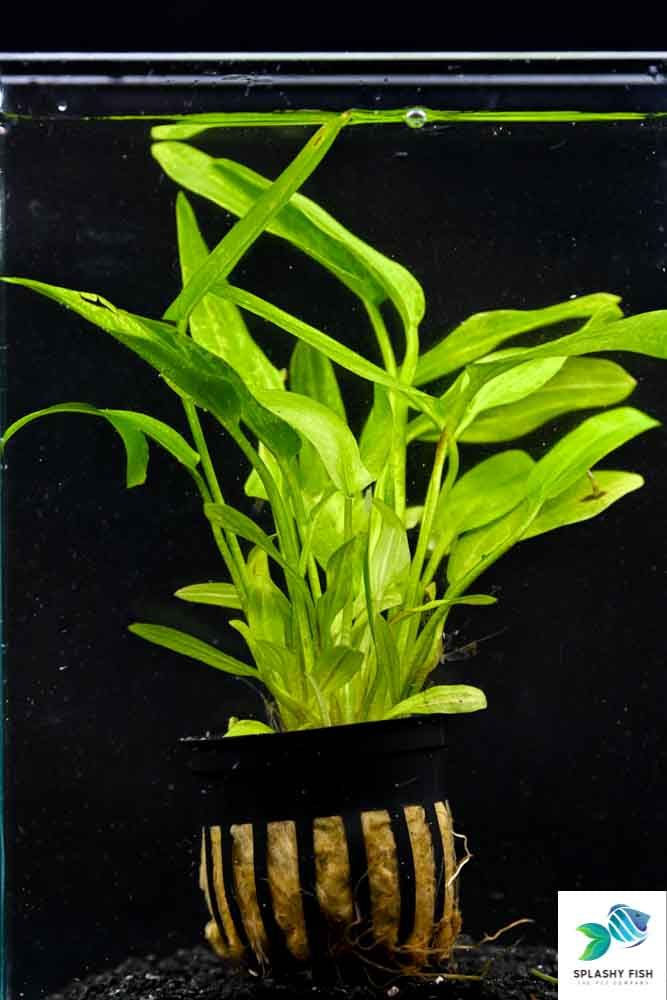
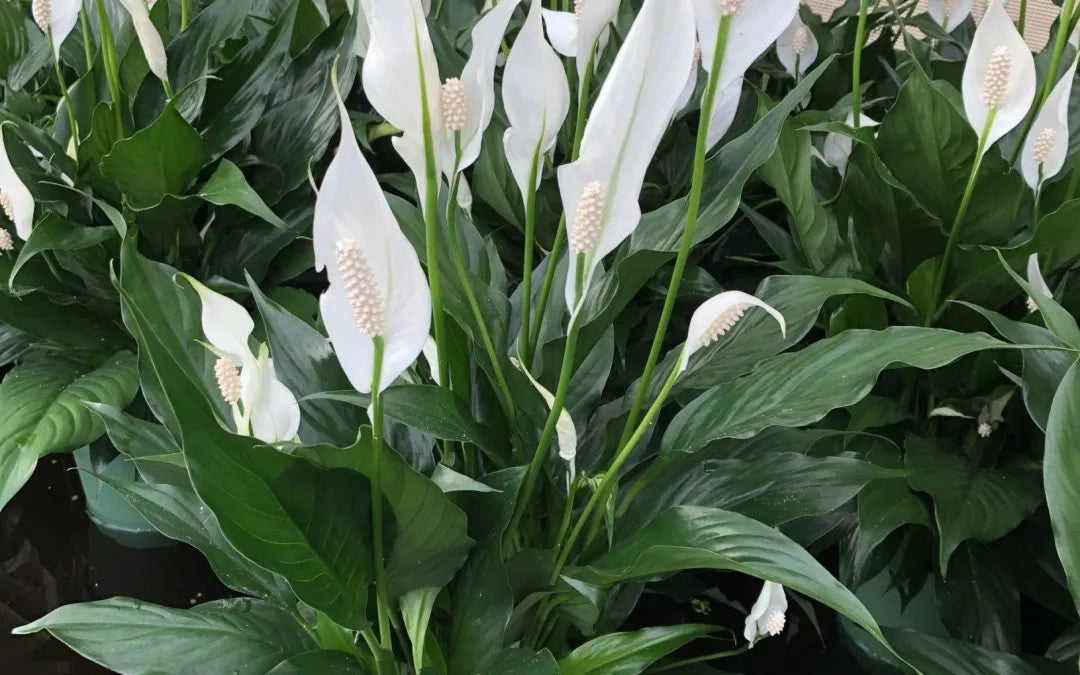
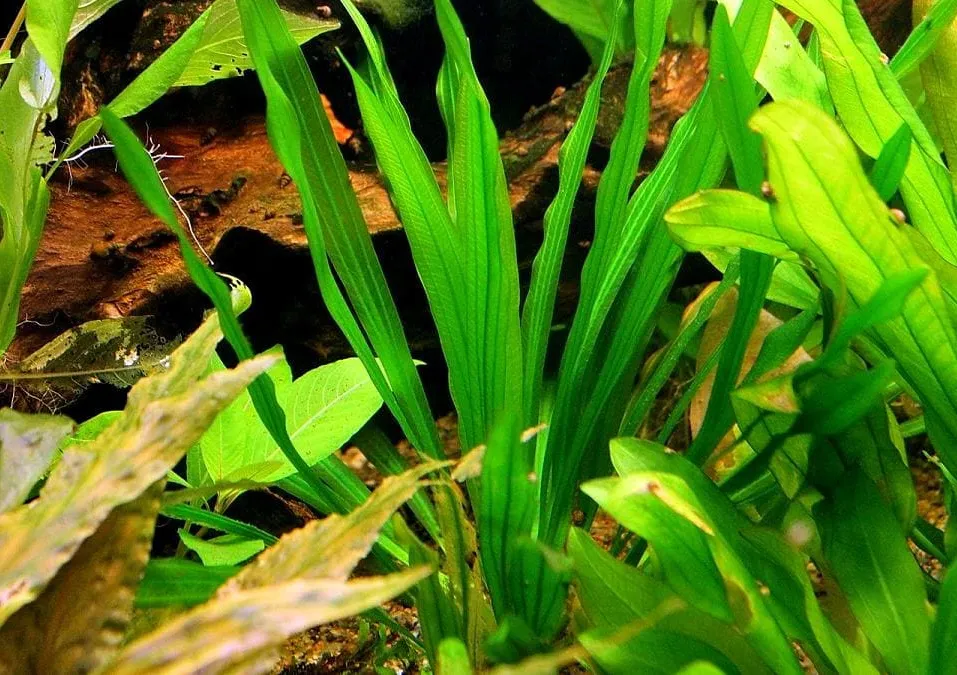
Sword live aquarium plants, including popular varieties are a popular choice for home aquarists due to their hardy nature and ability to thrive in a variety of aquatic environments. These aquarium plants are known for their long, sword-like leaves and robust, upright growth habit, and can add a natural and decorative element to any aquarium. Sword plants are easy to care for and require moderate lighting and a fertilized substrate to thrive. These plants can be propagated by dividing the roots or planting stem cuttings. Sword plants also provide a natural habitat for freshwater fish and other aquatic life, and can help to maintain a healthy and balanced ecosystem in the aquarium. With their hardy nature and attractive appearance, sword live aquarium plants are a practical and beautiful choice for any home aquarium.
Sword Plants Frequently Asked Questions (FAQs)
How do you take care of a sword plant?
Sword plants are easy to care for and can grow beautifully without crowding your tank. Keep the water temperature between 68°F and 82°F to mimic their natural habitat. Perform regular water changes, replacing 10-25% of the water every 2-4 weeks, to maintain a clean and healthy environment. With proper care, your sword plant will thrive and add stunning greenery to your aquarium.
What is the name of the sword plant?
The sword plant commonly known as the Amazon Sword Plant is scientifically named Echinodorus grisebachii or Echinodorus amazonicus. This aquatic plant is widely cultivated for aquariums, ponds, and artificial aquatic habitats. It’s a popular choice among hobbyists for its striking appearance, ease of care, and ability to thrive in various water conditions.
How to keep an Amazon Sword alive?
Amazon Swords need nutrient-rich substrate and regular root tabs to thrive. Be patient as they adapt to underwater growth, shedding old leaves before new ones emerge. Provide moderate to high light and stable water conditions for healthy,
The Ultimate Guide to Sword Plants: How to Care for, Propagate, and Admire These Spectacular Aquatic Beauties
Sword plants are popular among aquarium hobbyists for their striking appearance, ease of care, and ability to create a lush, nature-inspired aquascaping. From the iconic Amazon Sword Plants to the colorful Red Rubin and uniquely patterned Ozelot Sword Plant, these aquatic beauties are as versatile as they are beautiful. In this guide, we’ll explore different types of sword plants, their care requirements, and how to make them the centerpiece of your aquarium.
Introduction to Sword Plants: Stunning Centerpieces for Your Aquarium
Sword plants (genus Echinodorus) are prized for their lush, broad leaves and robust growth, making them ideal as background plants in a variety of aquascapes. Known for creating a tropical, natural feel, sword plants add structure and color to tanks of all sizes.
Ozelot Sword Plants: The Unique Beauty of Spotted Leaves
The Ozelot Sword Plant stands out with its striking, spotted leaves, which give it a unique and eye-catching appearance in any aquarium. The dark spots on the leaves, reminiscent of an ocelot’s fur pattern, add texture and depth, making it a great choice for creating visual interest in the midground of your tank.
Key Feature of the Ozelot Sword:
- Appearance: Its long, narrow leaves are adorned with dark spots, providing a patterned effect that sets it apart from other types of sword plants.
- Size and Placement: Growing up to 20 inches, the Ozelot Sword works well as a midground plant in larger tanks or a focal point in medium-sized aquariums.
- Aquarium light and Care Requirements: While it can thrive in low to moderate lighting, more intense aquarium lighting will enhance its spotting pattern. The Ozelot Sword Plant is hardy, making it suitable for beginner and experienced aquarists alike.
Tips for Growing Ozelot Sword Plants:
- Aquarium substrate: Plant it in a nutrient-rich substrate for the best growth, as sword plants absorb nutrients primarily through their roots.
- Fertilization: Use root tabs or a liquid fertilizer to provide essential nutrients. Ozelot Swords are heavy root feeders and benefit from a steady supply of nutrients to maintain their vibrant coloration and steady growth.
Adding Ozelot Sword Plants to your aquarium tank brings a unique aesthetic that can complement other green-leaved plants. Its adaptability and hardy nature make it a versatile and rewarding choice for aquascaping.
Amazon Sword Plant: A Classic for Freshwater AquascapingThe Amazon Sword Plant (Echinodorus amazonicus) is one of the most popular sword plants among aquarium enthusiasts due to its lush, broad leaves and adaptability to a variety of water conditions. Known for its robust nature and ease of care, the Amazon Sword is a go-to plant for creating a dense, tropical look in medium to large tanks.
Key features of the Amazon Sword Plant:- Appearance: With its large, lance-shaped green leaves, the Amazon Sword Plant can grow up to 20 inches, making it ideal for creating a lush background in the freshwater aquarium.
- Tank Size and Placement: Best suited for medium to large tanks, where it can serve as a focal point or background plant, providing cover for live freshwater fish and adding a sense of depth to the aquascape.
- Care and Light Requirements: This plant thrives in moderate to bright lighting. While Amazon Swords tolerate low-light, they grow faster and fuller with more intense lighting.
- Aquarium substrate: Plant Amazon Swords in a deep, nutrient-rich substrate to support their extensive root systems. They are heavy root feeders, so a substrate fortified with nutrients or the addition of root tabs will benefit them.
- Water Parameters: Amazon Swords prefer slightly acidic to neutral pH levels (6.5 – 7.5) but are tolerant of various water conditions, making them a good fit for community tanks.
- Fertilization: Regular fertilization with root tabs or a liquid fertilizer will support robust growth, especially if your substrate lacks nutrients.
The Amazon Sword Plant is loved not only for its impressive size and striking green leaves but also for its easy maintenance. It’s an ideal plant for both aquascaping beginner and experienced aquarists, adding a natural, tropical feel to any aquarium setup.
Brazilian Sword Aquatic Plant: A Versatile and Hardy ChoiceThe Brazilian Sword Plant (Echinodorus horemanii) is another popular species among aquascaping enthusiasts, valued for its vibrant green leaves and adaptability to a wide range of aquarium conditions. This plant is a fantastic option for aquarists seeking a hardy, low-maintenance centerpiece for their tank.
Key Feature of the Brazilian Sword Plant:- Appearance: The Brazilian Sword Plant has long, arching leaves with a vibrant green color, creating a lush and natural look. The leaves are typically narrower compared to the Amazon Sword, adding a touch of elegance to the tank.
- Size and Placement: It can grow up to 20 inches in height, making it ideal as a background plant for medium to large tanks or a focal point in smaller aquariums.
- Light and Care Requirements: This plant thrives in moderate to bright lighting. While it can tolerate low light, brighter conditions will encourage faster growth and more vibrant foliage.
- Aquarium substrate: Like other sword plants, the Brazilian Sword requires a nutrient-rich substrate to support its root-heavy growth. Using root tabs can help if the substrate lacks sufficient nutrients.
- Fertilization: Regular fertilization, either with liquid fertilizers or root tabs, is essential to maintain healthy growth and lush foliage.
- Water Parameters: The Brazilian Sword prefers slightly acidic to neutral water (pH 6.5 - 7.5) but is tolerant of a wide range of conditions, making it suitable for community tanks.
- Trimming and Maintenance: Prune old or yellowing leaves to promote new growth and keep the plant looking its best.
By adding the Brazilian Sword Plant to your aquarium, you can enhance its visual appeal while providing a healthy environment for your aquatic garden. Its hardiness and adaptability make it a rewarding choice for aquarists of all experience levels.
Benefits of having sword plants in your aquarium
Sword plants are more than just decorative additions to an aquarium; they bring a host of practical and aesthetic benefits that significantly bring a host of practical and aesthetic benefits that significantly enhance the health and appeal of your aquatic environment. These live aquarium plants, with their lush and vibrant leaves, create a stunning natural look that transforms any tank into a tropical underwater garden. Their versatility allows them to fit seamlessly into various aquascaping styles, from minimalist setups to densely planted designs.
In addition to their beauty, sword plants provide essential shelter and security for fish. Their broad leaves serve as excellent hiding spots and resting places, helping to reduce stress, particularly for shy or territorial species like angelfish, gouramis, and tetras. The presence of these plants encourages fish to exhibit more natural behaviors, such as exploring, grazing, and hiding, which enriches the aquarium environment and makes it more engaging for its inhabitants.
Sword plants also contribute to the overall health of the tank by improving water quality. They absorb excess nutrients like nitrates and phosphates, which can otherwise lead to algae overgrowth. This natural filtration ability promotes a healthier ecosystem, while their role in photosynthesis oxygenates the water, creating a well-aerated environment for aquatic life.
How to Plant and Position Sword Plants for Optimal Growth
To enhance the beauty of sword plants in your aquarium, proper planting and placement are essential. These plants rely on a nutrient-rich substrate for growth, so use root tabs if your substrate is gravel or sand. When planting, bury the roots but keep the crown above the substrate to avoid rot.
Positioning matters too. Amazon Sword Plants word bust as background plants in larger tanks, while Ozelet and Red Rubin Sword Plants add color and texture in the midground. Keep the foreground open for fish activity and smaller plants to create depth.
Sword plants thrive in moderate to high light. Use adjustable LED lighting to enhance their growth and color. With the right care and placement, these plants can become the highlight of your aquarium.
Step-by-Step Guide to Planting Sword Plants
- Choose a Suitable Substrate: Sword plants are heavy root feeders, meaning they pull most of their nutrients from the substrate. Opt for a nutrient-rich substrate, or supplement with root tabs if using gravel or sand.
- Planting Depth: When planting sword plants like Amazon Sword Plants or Ozelot Sword, ensure the roots are buried, but avoid covering the crown (the area where the leaves meet the roots). Burying the crown can lead to rot.
- Spacing and Placement:
- Amazon Sword Plants: Best used as background plants, they can reach heights of 20 inches or more. Place them towards the back of the tank for a layered look.
- Ozelot Sword Plant: With its beautiful spotted leaves, this plant works well in the midground where its unique pattern can be appreciated.
- Red Rubin Sword: Add a splash of red color by positioning Red Rubin as a focal point in the midground of your tank.
- Lighting Considerations: Sword plants thrive in moderate to high light. Brighter lighting enhances the color and growth rate, especially for varieties like Red Rubin Sword and Ozelot Sword Plant. Use adjustable LED lights if possible to support their growth needs.
Ideal Placement Tips for a Balanced Aquascape
To create a visually balanced aquarium with sword plants, strategic placement is crucial. Position larger plants like Amazon Sword at the back at the tank to establish depth and serve as a lush background. For the midground, use plants like Ozelet Sword and Red Rubin Sword to add pops of color and intricate texture, enhancing the tank’s visual interest without obstructing the view.
Keep the foreground open to allow fish ample space to swim and interact while incorporating smaller plants for layering and a natural flow. Thoughtful placement ensures a harmonious and eye-catching aquascape.
How to Propagate Sword Plants for a Lush Aquascape
Sword plants reproduce by sending out runners, which produce baby plants or “plantlets.” Propagating sword plants can be a simple way to fill in your tank with new growth or create a lush, layered aquascape over time.
Propagation Process for Sword Plants:- Identify Runners: Sword plants produce runners, which are horizontal stems extending from the base of the plant. Along these runners, small plantlets will start to develop roots and leaves.
- Wait for Growth: Allow the plantlets to grow until they have at least a few leaves and a good root structure. This ensures they’ll be strong enough to thrive when separated.
- Separate and Replant: Once the plantlet has developed root system, carefully cut the runner connecting it to the mother plant. Gently plant the new plantlet in the substrate, ensuring its roots are well-covered.
- Optimal Conditions: Ensure the parent plant is healthy, with good lighting and a nutrient-rich substrate to support runner growth.
- Spacing New Plants: Place new plantlets strategically, allowing space for each to grow and preventing overcrowding, which can affect water flow and nutrient distribution.
- Use Root Tabs: If the substrate is nutrient-poor, place root tabs near new plantlets to support strong root growth in their early stages.
Tank Mates for Sword Plants: Fish and Plants That Coexist Well
Sword plants are versatile and compatible with many tank mates, making them a great addition to a community aquarium. Peaceful fish like tetras, gouramis, and angelfish thrive alongside sword plants, enjoying the cover and security provided by their broad leaves. Freshwater invertebrates such as freshwater shrimp and snails are also excellent companions, as they help keep the plants clean by consuming algae and detritus. To create a balanced aquascape, pair sword plants with slower-growing species like Anubias or Java Ferns, which won’t compete heavily for nutrients but will complement the lush, layered look of the tank.
Sword plants, whether Amazon Sword, Ozelot Sword Plant, or Red Rubin, can transform your tank into a lush aquatic landscape with minimal care. By understanding the best planting, positioning, and propagation techniques, you’ll be able to cultivate a thriving underwater garden that showcases the beauty of these remarkable plants. With a little planning and care, sword plants will bring your aquarium to life, creating a stunning environment for both plants and fish to enjoy.
Whether you’re aiming for a tropical forest aesthetic or just looking to add some natural greenery, sword plants are a rewarding and impactful choice. Dive into the world of sword plants, and bring a touch of the exotic to your aquarium today!
Dealing with common issues and diseases in sword plants
Sword plants are resilient and beginner-friendly, but even these hardy aquatic plants can face challenges without proper care. One of the most common issues is yellowing leaves, which often signals nutrient deficiencies. A lack of essential nutrients like iron, potassium, or nitrogen can hinder the plant’s growth and vibrancy. To resolve this, ensure the substrate is nutrient-rich and regularly supplemented with root tabs or liquid fertilizers designed for aquatic plants. For best results, choose fertilizers that include trace elements like iron to restore the plant’s lush green appearance.
Algae growth on sword plant leaves is another common problem. Algae can build up to excessive light exposure, poor water circulation, or high nutrient levels in the water. Combat algae by maintaining proper tank conditions, such as reducing light intensity or duration, conducting regular water changes, and ensuring adequate filtration. Introducing algae-eating tank mates, such as Amano shrimp, Nerite snails, or Otocinclus catfish, can also help keep algae under control naturally.
Another issue aquarists might encounter is malting leaves, a condition where the plant’s leaves appear to disintegrate or become transparent. This often occurs when sword plants are newly introduced to an aquarium, as they adapt to their new environment and water parameters. Melting can also happen when transition between different water types, such as from emersed to submerged growth. To address this, trim away the damaged leaves to promote fresh, healthy growth, and ensure that the plant is receiving adequate light and nutrients.
Lastly, stunted growth may occur if the sword plant lacks space to spread its roots or is competing with other plants for resources. Ensure the plant is placed in a spacious area with a nutrient-dense substrate, and avoid overcrowding it with fast-growing plants that may deplete available nutrients.
Designing your aquarium with sword plants - placement and combinations
Sword plants are among the most versatile and visually appealing choices for aquascaping, adding depth, color, and structure to aquariums of all sizes. Their large, leafy structures make them perfect for creating a natural, tropical aesthetic while providing a range of benefits for the tank’s ecosystem. Proper placement and thoughtful combinations with other plants can transform your aquarium into a balanced and captivating underwater environment.
Larger sword plants, such as the Amazon Sword Plant, are best positioned as background plants. Their tall, broad leaves create a lush, dense backdrop that can mimic a jungle or rainforest aquascape. These plants are ideal for medium to large aquariums, providing shade and a sense of security for fish while also enhancing the overall depth of the aquascape.
In the midground, opt for sword plant varieties like the Ozelot Sword or Red Rubin Sword, which offer unique textures and colors. The spotted leaves of the Ozelet Sword or the vibrant red tones of the Red Rubin add visual contrast and serve as focal points without overwhelming the aquascape. Placing these plants strategically in the center of the tank ensures a balanced look while leaving space for fish movement.
To complement sword plants, pair them with slower-growing species such as Anubias, Java Fern, or Cryptocoryne. These plants coexist well with sword plants without competing heavily for nutrients, and their smaller size provides a harmonious layered effect. Foreground plants like dwarf hairgrass, staurogyne repens, or carpet mosses can fill the front of the tank, creating a dynamic and well-structured aquascape.
Conclusion and final thoughts
Sword plants are not just beautiful additions to your aquarium; they also play a vital role in creating a healthy and balanced ecosystem. With proper care, strategic placement, and thoughtful combinations, these plants can transform your tank into a stunning underwater landscape. Whether you’re a beginner or an experienced aquarist, sword plants are a rewarding choice that brings natural decoration and practical benefits to any aquarium. Dive into the world of sword plants and elevate your aquascaping game today!




















